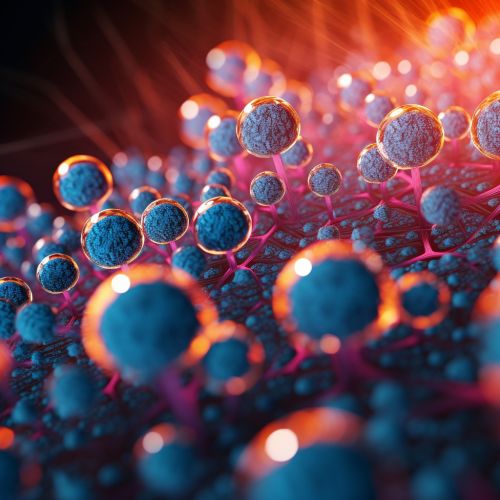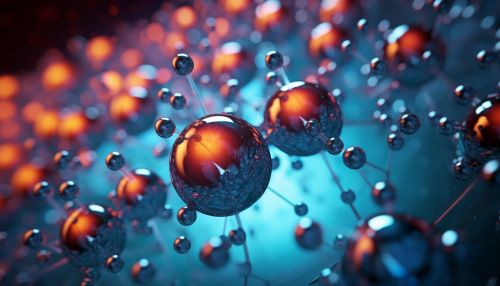The Physics of Nanoparticle Synthesis and Self-Assembly
Introduction
The field of nanotechnology has garnered significant attention in recent years due to its potential to revolutionize various sectors, including healthcare, energy, and electronics. One of the fundamental aspects of nanotechnology is the synthesis and self-assembly of nanoparticles. This article delves into the physics behind these processes, providing a comprehensive understanding of the principles and mechanisms involved.


Nanoparticle Synthesis
Nanoparticle synthesis refers to the process of creating nanoparticles, which are particles between 1 and 100 nanometers in size. There are several methods of nanoparticle synthesis, each with its unique set of principles and mechanisms.
Top-Down Approach
The top-down approach involves breaking down larger materials into nanoparticles. This method often employs physical forces, such as grinding or milling, to reduce the size of the material. The ball milling process is a common example of the top-down approach. It involves placing the material and grinding balls into a vial and shaking it vigorously. The collisions between the balls and the material break it down into nanoparticles.
Bottom-Up Approach
The bottom-up approach, on the other hand, involves building nanoparticles from atoms or molecules. This method often employs chemical reactions or processes to induce the formation of nanoparticles. For instance, the sol-gel process involves the reaction of a precursor solution (sol) that transforms into a gel-like network (gel), which can then be dried and heat-treated to form nanoparticles.
Physics of Nanoparticle Synthesis
The physics of nanoparticle synthesis involves understanding the principles and mechanisms that govern the formation of nanoparticles. These principles often involve concepts from quantum mechanics, thermodynamics, and kinetics.
Quantum Mechanics
Quantum mechanics plays a crucial role in nanoparticle synthesis as it governs the behavior of particles at the nanoscale. The quantum confinement effect, for instance, is a phenomenon where the electronic and optical properties of materials change as their size approaches the nanoscale. This effect is crucial in determining the properties of the synthesized nanoparticles.
Thermodynamics
Thermodynamics governs the stability of nanoparticles. The Gibbs free energy, a thermodynamic potential that measures the maximum reversible work that a system can perform at constant temperature and pressure, is a key factor in nanoparticle synthesis. The minimization of Gibbs free energy often drives the formation of nanoparticles.
Kinetics
Kinetics, the study of the rates of chemical reactions, also plays a significant role in nanoparticle synthesis. The rate at which atoms or molecules react to form nanoparticles can influence their size, shape, and distribution.
Nanoparticle Self-Assembly
Nanoparticle self-assembly refers to the process where nanoparticles organize themselves into ordered structures. This process is driven by various forces, including van der Waals forces, electrostatic forces, and magnetic forces.
Van der Waals Forces
Van der Waals forces are weak intermolecular forces that play a crucial role in the self-assembly of nanoparticles. These forces can induce the aggregation of nanoparticles, leading to the formation of larger structures.
Electrostatic Forces
Electrostatic forces, resulting from the interaction between charged particles, also play a significant role in nanoparticle self-assembly. These forces can cause nanoparticles to attract or repel each other, influencing their arrangement in the final structure.
Magnetic Forces
For magnetic nanoparticles, magnetic forces can drive their self-assembly. The alignment of the magnetic moments of the nanoparticles can lead to the formation of ordered structures.
Physics of Nanoparticle Self-Assembly
The physics of nanoparticle self-assembly involves understanding the principles and mechanisms that govern the organization of nanoparticles into ordered structures. These principles often involve concepts from statistical mechanics, thermodynamics, and kinetics.
Statistical Mechanics
Statistical mechanics, which provides a link between the microscopic properties of individual atoms and molecules and the macroscopic properties of materials, plays a crucial role in understanding nanoparticle self-assembly. It can provide insights into the probabilities of different arrangements of nanoparticles, helping predict the final structures that they form.
Thermodynamics
As with nanoparticle synthesis, thermodynamics also plays a crucial role in nanoparticle self-assembly. The minimization of Gibbs free energy often drives the organization of nanoparticles into ordered structures.
Kinetics
The kinetics of the self-assembly process can influence the final structures that nanoparticles form. The rate at which nanoparticles move and interact can determine their arrangement in the final structure.
Conclusion
The physics of nanoparticle synthesis and self-assembly is a complex field that involves principles and mechanisms from various areas of physics. Understanding these principles and mechanisms can provide valuable insights into the processes of nanoparticle synthesis and self-assembly, paving the way for the development of new nanotechnologies.
